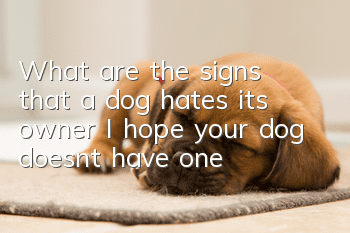How to treat urinary incontinence in dogs

To treat dog urinary incontinence, you need to first diagnose the cause and then formulate a targeted treatment plan. It is recommended that you take your dog to a pet hospital first. The available treatments are as follows: First, medications relax the bladder and control secondary infections. Second, surgery to repair the tissue that supports the bladder and urethra or improve urine flow. Third, nerve electrical stimulation relaxes the bladder. Fourth, strengthen the pelvic floor muscle tension through exercise therapy or acupuncture therapy, so that the symptoms can be alleviated or corrected.
1. If your dog has urinary incontinence due to being frightened or new to a strange environment, showing fear and nervousness, you should immediately calm down the dog, divert its attention with snacks or toys, and spend more time with the dog. Dogs also need to minimize irritating factors in the process of raising dogs.
2. If the dog’s urinary incontinence is caused by abnormal bladder function due to urinary tract infection, pelvic infection, chronic inflammation, tumors, fecal obstruction, external pressure, bladder dysplasia, etc., it is recommended that the owner take the dog to the pet hospital as soon as possible. Get checked out and get treatment.
3. If there is a problem with the nerve pathways that control urination due to nerve problems, whether it is primary (such as neuropathy) or secondary (such as trauma, infection, or tumor, etc.) urinary incontinence, it needs to be treated as soon as possible Take your dog to a pet hospital for diagnosis and treatment, and most of this happens to older dogs.
4. If your dog has urinary incontinence due to urethral obstruction, structural problems, urine retention, etc., you also need to take your dog to a professional pet hospital for diagnosis and treatment.
Note: Dog urinary incontinence is not a trivial matter. It is recommended to take your dog to a pet hospital for medical treatment once discovered to avoid missing the best treatment time.
- Characteristics of German Shepherd Pregnancy
- Common knowledge about raising dogs during the full moon
- What to do if your dog has diarrhea and vomiting? Here are a few tips to easily solve it?
- Is a Shiba Inu easy to raise? How old does a Shiba Inu need to be for training?
- How to train French Bulldogs to fight? Training tips for French Bulldogs!
- Symptoms and Treatment of Golden Retriever Tonsillitis
- How long does it take for canine distemper to eat?
- Why is the puppy bleeding black water after more than 50 days of pregnancy?
- Losing weight is hard, we can choose to walk the dog more
- What to do if your dog miscarries at 40 days of pregnancy



